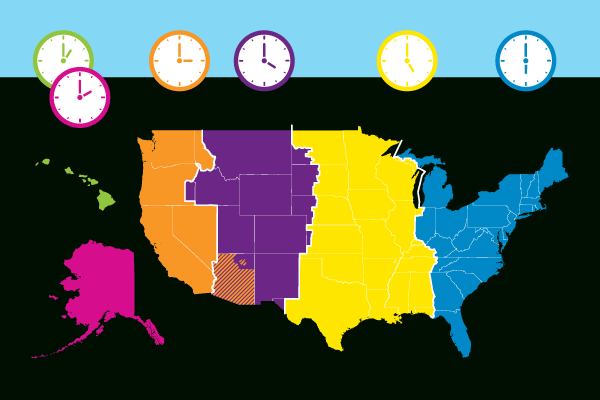Time Zone Normalization: Ensuring Consistent Handling of Time Stamps Across Different Locations

Imagine an orchestra playing across continents. The violinist in London, the drummer in New York, and the pianist in Tokyo all performing the same piece, yet starting at different local times. Without a synchronized global clock, the melody turns into chaos. In the digital world, time zone normalization plays the same role as the conductor in that orchestra ensuring that every note (or data point) aligns perfectly, regardless of where it originates.
The Invisible Problem: When Time Misleads
Time stamps, while seemingly simple, can easily betray us. A log entry might say an event happened at “08:00”, but 08:00 where? Delhi? London? Sydney? In systems distributed across geographies, these ambiguities can create a cascade of errors. An automated report might sort transactions incorrectly, a server may process logs out of order, or an analyst might misjudge trends all because of time zone inconsistencies.
This is especially critical for professionals dealing with large, real-time datasets, where timing determines causality. Those pursuing a Data Scientist course in Delhi often learn early that time inconsistencies can derail even the most sophisticated models. Every millisecond matters when systems communicate globally.
The Metaphor of a Universal Translator
Think of time zone normalization as a universal translator. Just as translators convert words into a common language, normalization converts local times into a single standard usually Coordinated Universal Time (UTC). This “lingua franca” of time ensures everyone speaks the same temporal language.
When a user in Mumbai logs in at 2 p.m. IST and another in London at 8:30 a.m. GMT, both actions can be accurately recorded as UTC timestamps. No confusion, no misalignment just a consistent understanding of when things truly occurred. This standardization is the backbone of reliable analytics, cross-border operations, and fair comparison across time-based metrics.
The Challenges Hidden in Plain Sight
The process, however, isn’t as simple as flipping a switch. Daylight Saving Time (DST), for example, complicates matters. Some regions move clocks forward or backwards seasonally, while others don’t. Historical changes when countries alter their time zone policies can further muddy the waters. Even leap seconds, added occasionally to keep atomic time in sync with Earth’s rotation, can trip up systems that assume 86,400 seconds in a day.
A data engineer once likened it to adjusting the gears of a moving clock while it’s still ticking. One small oversight can lead to cascading anomalies logs appearing in the future, metrics misaligning, or time-based queries producing nonsensical results. A misplaced second can turn into hours of debugging.
Why It Matters in Analytics and AI
In data analytics and AI pipelines, accurate time stamps aren’t optional they’re foundational. Models predicting customer behaviour, forecasting sales, or detecting fraud all depend on precise event ordering. Time zone discrepancies can distort reality, leading to false insights. Imagine a credit card fraud detection system misreading a transaction sequence because the time zone wasn’t normalized it could flag legitimate behaviour as suspicious or miss real fraud entirely.
Students taking a Data Scientist course in Delhi often discover this lesson when they build time-series models. They realize that the key to temporal accuracy isn’t in fancy algorithms but in clean, consistent, and well-normalized data. Without this foundation, even the most advanced AI will produce unreliable outcomes.
The Process: How Normalisation Works
Time zone normalization typically begins with collecting data in its local time zone, often accompanied by the zone identifier (like “Asia/Kolkata” or “America/New_York”). Then, using standard libraries or tools such as Python’s pytz or Java’s ZoneId timestamps are converted to UTC. This process ensures that every piece of data aligns to a single reference frame.
When users view the data, it can be re-localized for readability showing 9 a.m. for Tokyo and 1 a.m. for London but the stored data remains consistent. This “store in UTC, display in local time” principle prevents data drift and preserves integrity across systems, dashboards, and databases.
Lessons from Global Systems
Major technology companies learned these lessons the hard way. In the early days of distributed systems, developers hard-coded local time zones, assuming uniformity. When applications scaled globally, users started reporting oddities emails appearing to arrive before they were sent, calendar invites showing up on the wrong day, or logs seemingly jumping backwards in time.
The fix was simple in principle yet complex in implementation: normalize everything to UTC. Today, whether it’s Google’s event logging, AWS’s server metrics, or Slack’s message history, all rely on UTC internally. The end-user may never see it, but behind the scenes, it keeps global collaboration humming smoothly.
The Human Side of Time
Beyond the technicalities, time zone normalization reflects a more profound truth about modern data ecosystems cooperation requires consistency. Just as international teams rely on shared calendars and virtual meetings, global systems depend on shared time references. A timestamp might seem trivial, but it represents a universal point of agreement, anchoring every digital interaction in a standard frame of truth.
Conclusion: Synchronizing the Digital Clockwork
In an interconnected world, time is both our ally and our adversary. We rely on it to sequence, predict, and understand, yet it can deceive when mishandled. Time zone normalization is the quiet hero ensuring that this global machinery keeps perfect rhythm. It’s not just about adjusting clocks it’s about preserving meaning, order, and trust in data.
Just as an orchestra’s harmony depends on every musician following the same tempo, our digital universe depends on synchronized timekeeping. And for those delving into the world of data science, mastering the nuances of time zone normalization is not merely a technical skill it’s a form of digital discipline, one that ensures clarity in the vast and ever-ticking expanse of global data.




